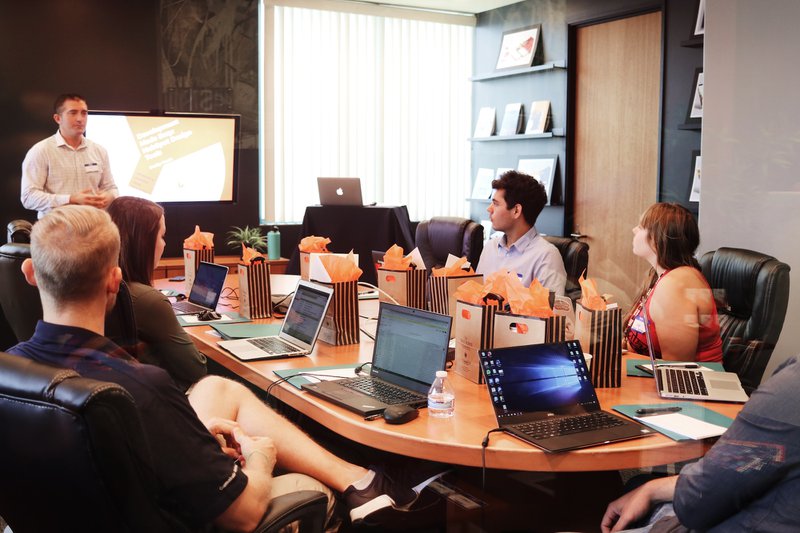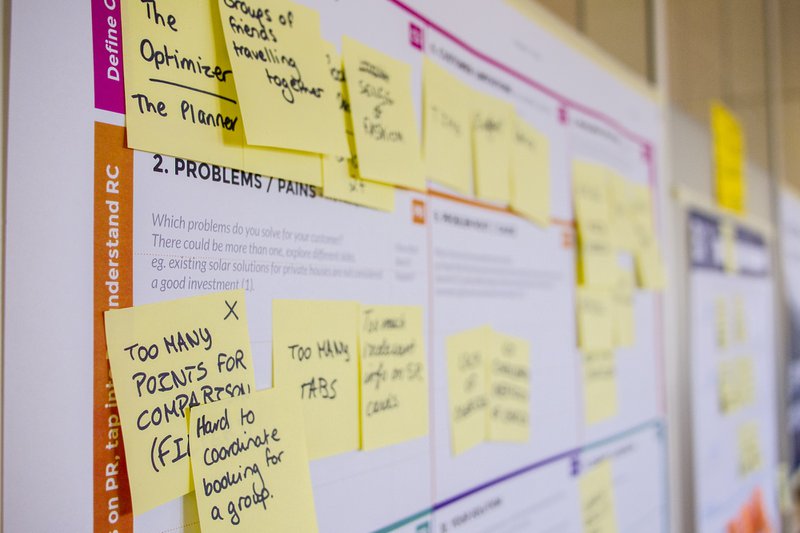
April 12, 2023
How To Plan Your MVP (Minimum Viable Product)
If you’re ready to begin planning your Minimum Viable Product (MVP), take a step back and assess your immediate needs. A successful launch of your product depends on a simple solution your customers want. It should be built quickly with flexibility to scale. It will not consist of everything you wish it could be. Planning your MVP is a thought-provoking process that should be done right the first time to mitigate risks and maximize the value of your product.
There are some steps to consider to make a functional and extremely valuable product for your customers. An MVP should never include everything you can think of for your product. This would drive you to over analyze your features, costing both time and money. Let your customers tell you what features are most important to implement next after you launch your MVP.
In this article, we will discuss several steps to ensure that you create a valuable product for your customers, including correctly identifying the problem you are trying to solve, prioritizing features, building and testing your MVP, and refining your product based on user feedback.
What Exactly Is An MVP?
An MVP is the most basic product version you can build that your customers would use or pay for, allowing you to test your assumptions and gather customer feedback. By listening to your customers, you then iterate quickly to improve the solution and add new features. An MVP is built quicker and faster than a full-featured solution.
Three popular companies we know today: Buffer, Dropbox, and Zappos grew from surprisingly simple MVP concepts to massively successful companies in a short span of time. They kept their approaches uncomplicated, found their target audience, and were able to leverage their MVP as an excellent starting point to build and scale from.
However, to roll out a successful MVP like Zappos, you must be very selective with your features. Think simple! While many of us want to offer our customers every option and unique feature under the sun, that is not the purpose of an MVP. Be stingy with your MVP features and strive to build your solution quickly and conserve costs.


Identify The Problem You Are Trying To Solve
When you begin to build and plan your MVP, ask yourself: “what are we trying to solve with this product?” If there are multiple answers to your question, consider simplifying your MVP. While having a product that answers the need for various problems is okay, you could end up building a very expensive solution which takes far too long to build only to find your customers wished you would have built something different.
Your MVP should be simple and focused on solving a specific problem or meeting a specific need. To fine-tune your MVP, identify the root of your problem by researching to gain insights into your target audience and their true needs. Some ways to do this include:
- Conducting surveys
- Analyzing data
- Talking to potential customers and listening to their feedback.
When you follow these steps and develop an understanding of your target audience, it will be easier for you to identify specific pain points and challenges they face. Pick a few of the most painful problems and only focus on those. This information will help you develop your MVP scope. In addition, creating a backlog of features after the MVP release will ensure you don’t forget any great ideas which were not chosen for the initial release. This allows you to focus on getting your MVP done quickly and with less cost without losing focus of your end vision.


Prioritize Your Functionalities and Features
With a good understanding of the problem(s) you are trying to solve, it’s time to determine your MVP features. Your MVP is not the “final” solution. It is built with a minimum set of features required to satisfy early customers and gather feedback for future product development.
To prioritize features, consider some of these factors:
- How important each feature is with your target audience
- The feasibility of developing each feature within your timeline
- The cost associated with including the feature now vs. later
- Is the feature solving an urgent problem for the user
By prioritizing features in this way, you can focus your efforts on fewer features that deliver help to your customers quicker.
Using Agile To Build And Test Your MVP
If you’re working within an Agile development process, your MVP should be developed quicker than with other methodologies. Agile allows the development team to gather feedback from customers and stakeholders early on and layer-in functionality. “MVPs tie in really well with Agile development,” says Tim Furry of Flint Hills Group, “When done properly – the customer sits in on sprint planning sessions, and each and every story pushes towards MVP – highest priorities, minimal features for a full release, no time wasted on things they don’t want yet.”
The Agile principles of iterative development, continuous improvement, and customer feedback can create an excellent backbone for building and testing a quicker path to the initial version of your product. But there are still some best practices to keep in mind during this process:
Keep it simple: Avoid the lure of scope creep. Always ask if an idea could be postponed util after the initial release as a backlog item.
Use existing tools and resources: Whenever possible, you should leverage existing tools and resources to speed up development and reduce costs.
Test early and often: You should test your MVP early and often to identify any issues or challenges that need to be addressed before launching.
Apply user testing: Ask potential customers to test your MVP and provide feedback on its usability, functionality, and overall value.
Build in analytics:Include analytics tools to track user behavior and identify areas for improvement.
By testing your MVP early and often, you can identify any issues or challenges that need to be addressed before launching and can ensure that your product is as valuable and effective as possible.


Continuously Refine Your Product Based on User Feedback
Once you have launched your MVP and gathered feedback from early users, the next step is to scale and improve your product based on user feedback. Just because you have launched does not mean that the project is over. Often, this is when the project gets started! User feedback involves analyzing anything from users, identifying improvement areas, reviewing the backlog ideas and constantly scaling and improving the product to address concerns and needs.
By continuously refining your product based on user feedback, you can ensure that it stays relevant and meets your customer’s needs as they evolve. This review process allows you to identify any bugs, glitches, or issues that may have been missed during the initial development process and address them quickly. Additionally, user feedback can help you to identify new features and enhancements that can be added to the product to improve the user experience.
Choose Flint Hills Group To Build Your Next MVP
Planning your MVP is a critical step in the product development process. It involves several key steps including identifying the problem you are trying to solve, prioritizing features, building and testing your MVP, and refining your product based on feedback.
Are you interested in building an MVP but need to know where to start or how much it might cost? Try our free custom software estimate calculator! Or call our team at Flint Hills Group today to discuss how to begin the building process. If you need the tools on your team to build it out yourself, you can trust Flint Hills Group to follow the best practices above to ensure that your MVP is as valuable and effective as possible and meets your target audience’s needs.
Julie Simpson
Technology Enthusiast
Julie Simpson is a freelance writer, SEO consultant and technology enthusiast from Lucedale, Mississippi. When not writing articles and updating websites, she can be found working on her 7-acre farm with her husband, daughters, and assortment of plants, chickens, dogs, cats, and sheep.




Julie Simpson
Technology Enthusiast
Julie Simpson is a freelance writer. SEO consultant and technology enthusiast from Lucedale, Mississippi. When not writing articles and updating websites, she can be found working on her 7-acre farm with her husband, daughters, and assortment of plants, chickens, dogs, cats, and sheep.

